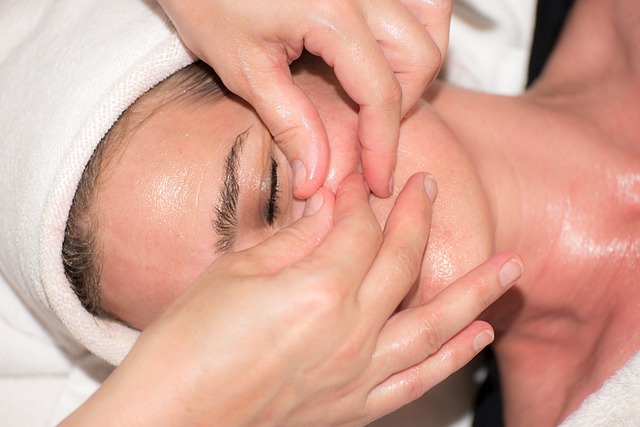Skin tags, caused by friction and hormonal changes, are small growths commonly appearing in areas of skin-to-skin contact. Bristol residents have various professional removal options, including at-home methods using salicylic acid or ammonia, and more aggressive techniques like cryotherapy or surgery. Skilled dermatologists offer safe and proven methods with quick recovery times, such as laser treatment, cryosurgery, surgical excision, scalpel removal, and adhesive tapes. Proper post-removal care involves keeping the area clean, dry, and moisturized, preventing regrowth through regular exercise, balanced diet, and avoiding irritating factors.
Skin tags, those small, harmless growths on our skin, are a common concern. While they are usually painless, many seek ways to remove them for aesthetic reasons. This article explores effective skin tag removal techniques, from DIY methods at home to professional Bristol skin tag removal services. We’ll guide you through understanding these benign bumps, their causes, and common areas of appearance, offering practical advice on post-removal care and prevention tips to ensure smooth results.
- Understanding Skin Tags: Causes and Common Areas
- Non-Invasive Removal Methods at Home
- Professional Skin Tag Removal in Bristol
- Post-Removal Care and Prevention Tips
Understanding Skin Tags: Causes and Common Areas
Skin tags, also known as acrochordons, are small, soft skin growths that typically appear as hanging, harmless lumps on the neck, armpits, groin, or belly. They are usually not a cause for concern, but some individuals may find them unsightly or uncomfortable. Understanding their causes can help in deciding the most suitable removal method, such as those offered by Bristol Skin Tag Removal experts.
The primary reason for skin tags is friction and constant rubbing of skin against skin or clothing. This occurs commonly in areas where there are creases or folds, leading to the accumulation of dead skin cells and collagen. Hormonal changes, obesity, or certain conditions like diabetes can also contribute to their development. While they usually don’t cause pain, itching, or any other symptoms, individuals with sensitive skin might experience mild irritation.
Non-Invasive Removal Methods at Home
Many people opt for non-invasive removal methods at home when it comes to skin tags, and one popular choice is Bristol skin tag removal. This involves using over-the-counter creams or salves that contain ingredients like salicylic acid or ammonia, which work by drying out and ultimately shedding the skin tag. It’s a simple, relatively painless process that can be done in the comfort of your own home.
However, it’s important to remember that while these methods are accessible and convenient, they may not always be as effective as more aggressive approaches. Results can vary, and for larger or stubborn skin tags, a medical professional might recommend other techniques such as freezing (cryotherapy) or surgical removal for better outcomes.
Professional Skin Tag Removal in Bristol
In Bristol, individuals seeking effective skin tag removal have several professional options available. Skilled dermatologists and aesthetic practitioners offer a range of safe and proven methods to eliminate these common skin growths. One popular choice is laser treatment, which uses targeted light energy to break down the skin tags, a minimally invasive procedure with quick recovery times. Another effective technique is cryosurgery, where liquid nitrogen freezes and destroys the skin tags, suitable for those with multiple or persistent tags.
For more targeted approaches, dermatologists might recommend surgical excision or scalpel removal, ensuring precise and clean cuts to prevent scarring. Alternatively, medical-grade adhesive tapes or creams can be prescribed for at-home use, offering a convenient solution for milder cases. Bristol’s diverse healthcare landscape ensures residents have access to cutting-edge technologies and expert care when addressing skin tag concerns, providing peace of mind and improved confidence in their skin’s appearance.
Post-Removal Care and Prevention Tips
After skin tag removal, proper care is essential for optimal healing and to prevent further growth. Keeping the treated area clean and dry is crucial; gently wash with mild soap and water, avoiding harsh chemicals or hot water that can irritate the skin. Pat dry instead of rubbing, and apply a thin layer of fragrance-free moisturizer daily to maintain hydration.
To prevent new skin tags from forming, consider adopting some lifestyle changes. Regular exercise increases blood circulation, which helps keep your skin healthy; additionally, maintaining a balanced diet contributes to overall well-being. Avoid friction or irritation that could lead to skin tag development, such as tight clothing or frequent rubbing against surfaces. If you live in Bristol and are considering skin tag removal, consult professionals who can offer safe and effective treatments tailored to your needs.
Whether you opt for at-home remedies or professional Bristol skin tag removal, understanding these benign growths and their causes is key. While they are typically harmless, persistent or unsightly tags can be removed effectively, leaving your skin smooth and confident once more. Remember, proper post-removal care and prevention strategies can help avoid future skin tags, ensuring a clearer, healthier complexion.
